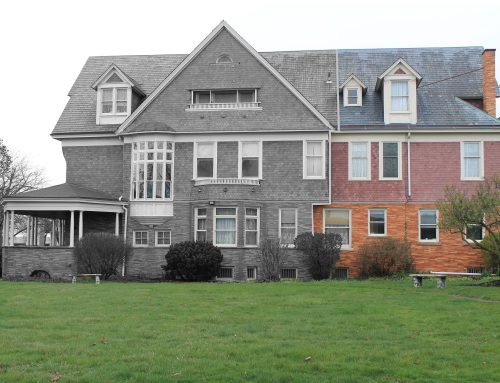
The First Lady of 632 W Market Street
 As far as the MacDonell House’s history, and in all honesty, most histories go, the focus has almost always been on the lives of the men who lived in the house. Typically, men’s histories are the easiest to write because they were encouraged to do many more things outside of the house compared to women. It was the man who went into the world to work and support the family. Women’s history is not as straightforward; often, there is guesswork and very little research available to understand the women who lived there. This year’s newsletter articles will provide information on the six women connected to the MacDonell House. Their histories, are more unclear than their male counterparts, but telling them worthy of our time and attention. This is all to say that these women’s histories will finally be told.
As far as the MacDonell House’s history, and in all honesty, most histories go, the focus has almost always been on the lives of the men who lived in the house. Typically, men’s histories are the easiest to write because they were encouraged to do many more things outside of the house compared to women. It was the man who went into the world to work and support the family. Women’s history is not as straightforward; often, there is guesswork and very little research available to understand the women who lived there. This year’s newsletter articles will provide information on the six women connected to the MacDonell House. Their histories, are more unclear than their male counterparts, but telling them worthy of our time and attention. This is all to say that these women’s histories will finally be told.
Unfortunately, The Allen County Museum does not have any photographs labeled as Mary Banta. There are two images of Frank Banta, and some of the advertising and candy boxes from his business. However, most of the images used in this article are time period appropriate group photographs either from The Allen County Museum Archive or the Library of Congress.
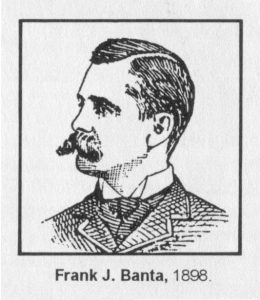
Mrs. Mary Banta was the first woman to live in what is known today as the MacDonell House. She was born in Troy, Ohio, on January 20, 1860, to Joseph R. and Sarah John.[1] There is no assessable knowledge about her childhood, young adulthood, what her parents did, or even what their socioeconomic standing was in at time. Even her marriage date to Frank Banta is unknown. What is known is that Roy Banta, their only child, was born in 1879, so we will assume, based on society at that time, that the Bantas were married before then.[2] Likewise, the Bantas moved from Troy to Lima in 1881.[3] At that time, Frank Banta was in business with his brother Herbert, they had a small fruit business that would grow into a grocery store. Eventually that business became a profitable confectionery store and candy manufacturing factory by the time they built their house on W Market Street in 1893.[4] With this business growth, we can assume that the Bantas went from lower middle class to the high society of Lima in those twelve years. This is further illustrated by their house being the trendy Victorian Shingle Design and on the golden block of Lima.

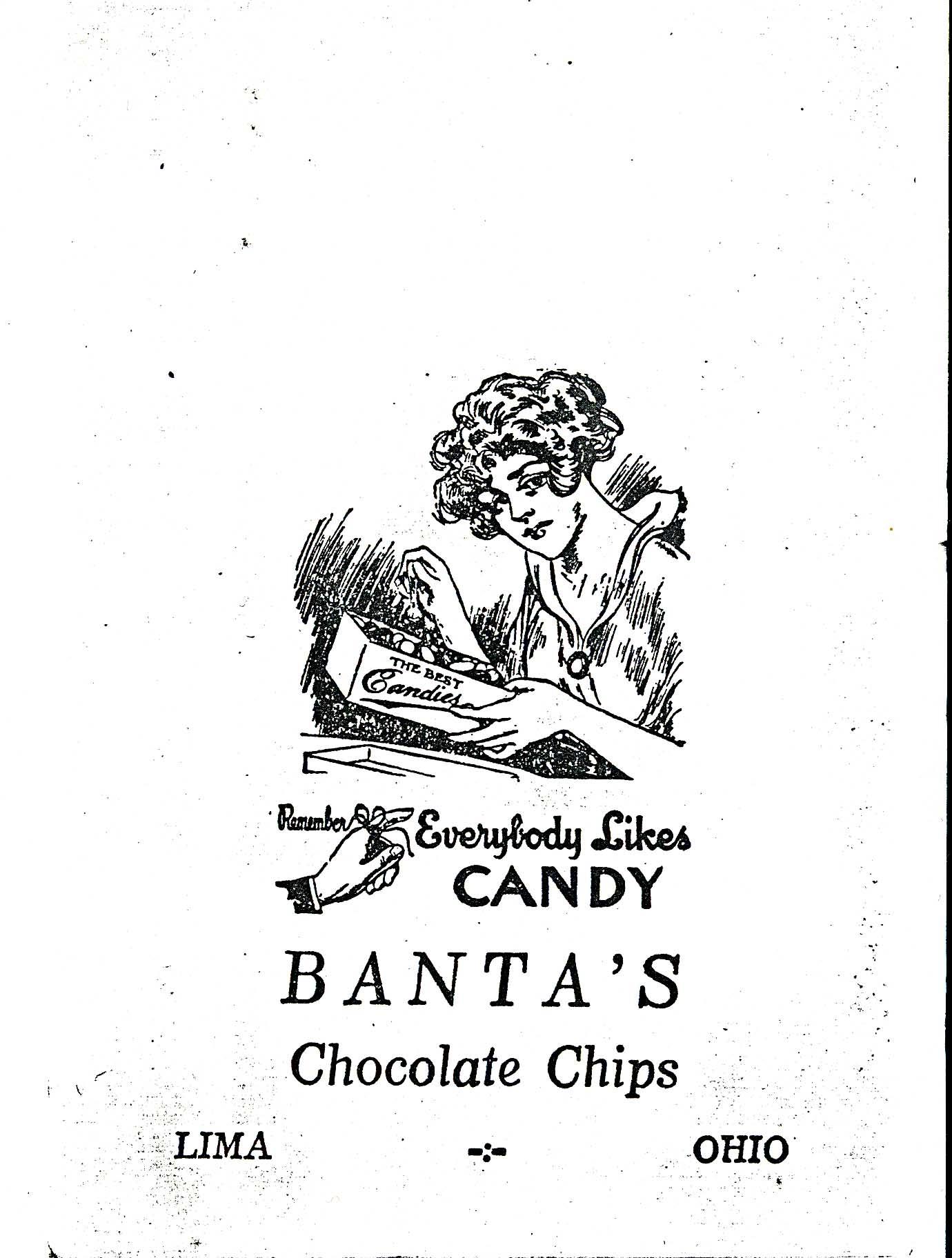
An absolutely, accurate history cannot be told by basing the personality of someone or even, in part, their preferences on their house’s design. However, we will do this sparingly regarding Mary Banta because it is one of the unique and tangible ways to talk about her. Of course, this must be done with the knowledge that Frank Banta could have contributed to the aesthetic decisions about their house. First and foremost, the house is in the contemporary taste of the time, as mentioned in the February article. More highly decorative design styles of the Victorian era were no longer in vogue; the style of the time was to simplify but still focus on craftsmanship and molding. Nonetheless, there are aesthetic choices in the home that do not necessarily follow this theme. We have the classical Greek/Roman figures around the library fireplace, also touched on in February’s article and pictured here. The insert of this fireplace is a Spanish conquistador-looking armor set with weaponry and leaves. The parlor’s fireplace insert is of a classical profile of a man with the name Ulysses spelled out in Greek around it. Most likely referencing Odysseus, Ulysses in the Roman version, the main character in Homer’s Odyssey. These choices give us the impression that the Bantas enjoyed neoclassical elements in their home. It also makes one wonder about their education level. Is it higher than we might suspect? Are they bibliophiles who do not have formal education but very much enjoy reading and are well-learned? Or did they choose these elements on a whim, and it indeed says little to nothing about them personally? There is no easy answer to this. The one point that should be made is that none of these design elements are substantial. In the 2013 Allen County Reporter, Patricia Smith states, “These [neoclassical] expressions were deliberately relegated to locations that were difficult to see”[5]. Two of the pieces mentioned here are fireplace inserts; thus, the designs are behind the fire in the fireplace. Similarly, while the classical figures around the fireplace in the library are on the fireplace surround, they are a creamy white color, just like the rest of the surrounding stone. Hence, even though we have these neoclassical elements, they take up much less visual space than the contemporary aspects of the Victorian Shingle Styled interior, like the wainscoting and moldings. So, even though these classical designs are intriguing, giving them more impact than necessary on Mary or Frank’s personal aesthetic interest is not logical.



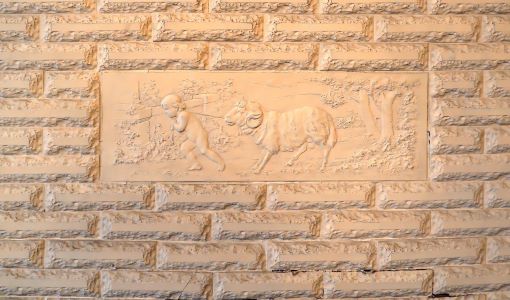
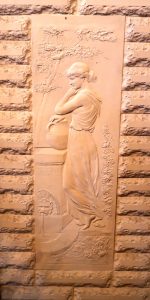

Oral history tells us one thing about the interior that was Mary Banta’s direct choice: the lighting. The main hallway’s chandelier is wired with both gas and electricity.[6] Having electricity in one’s house in 1893 would have been an immense luxury. By 1925, only around half of the homes in the United States had electricity, making the Banta home more than twenty-five years ahead of the time.[7] However, it is important to note that not everyone enjoyed electricity; Mary certainly did not. It is said that she did not trust electricity. It had only been around substantially for just over ten years not in workshops and inventors’ homes, but lighting up buildings.[8] No doubt, it did not run as smoothly as it does today, surging more and being less consistent. Therefore, Mary’s worries were probably logical for the time. It is likely that electricity was added to give that modern wealthy feel that depicted the Bantas as one of the sophisticated members of Lima’s high society. Although Mary did not like the electric lighting herself, simply having it in one’s home would have been quite modern for the time.
From all the newspaper articles about the Bantas and their new home, we get an idea of how Mary presented herself to the public as well as how they saw her. In The Lima Times Democrat article about the start of the house, she is described as “a womanly wife, whose perfect refinement of nature enabled her to meet the struggles of adversity with the same grace with which she now adorns her high social position.”[9] They were this perfect American success story, the family beginning with a small fruit stand to a large candy manufacturing company. In this article, we see praise for Mary being beside Frank through this triumph and helping him. In the same article, the home is dubbed a monument to Frank’s “success and happy home life.”[10] Hence, Mary is seen as one of the reasons he succeeded and is also worthy of celebration. The Allen County Republican Gazette treated her similarly in their article about the Banta’s first party at the new home, “It was one of the most enjoyable social affairs Lima has seen in many a day. How could it be otherwise amid such splendid surroundings, with every convenience at hand, with a popular host and a charming hostess?”[11] We get the idea from both articles that the Bantas are generally adored by the other citizens of Lima, or at the very least the reporters. At this party, the Bantas reportedly had fifty couples, therefore one hundred guests, in the house during one party.[12] The article was quick to note that the house did not feel crowded but that it was a joyous event added to by the graces of Mary and Frank.[13] With this information, we can see that Mary was generally liked and definitely in the league of high society wives of Lima at the time.

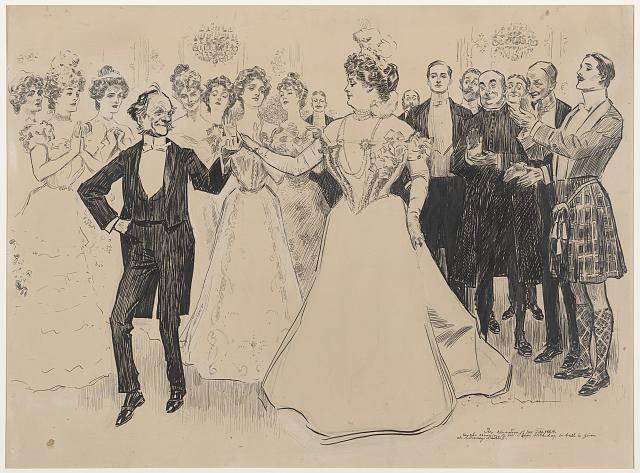

The greatest mystery surrounding the Banta family is why they moved out of the 632 W Market Street home. In 1897, they swapped houses with the Van Dykes, who we will talk about in the next three newsletters and downsized to a smaller home also on W Market Street.[14] The reason why the Bantas moved has always been attributed to money troubles. There were two substantial recessions in 1893 and 1896; they were the worst recessions the country had seen since the Civil War and until the Great Depression.[15] From this we can assume that everything was not financially at its best for the Bantas. Although they did build their home in 1893-4, so that must be kept in perspective. The 1900 U.S. Federal census tells us that the Bantas had moved again, this time renting an apartment on North West Street.[16]
To give a fuller view of the Bantas, we should also look at their financial status. The History of Allen County talks about Frank Banta as a business man, “He has established an enormous trade based on the superior quality of his goods, the business expanding from a very small beginning until at the present time it averages $150,000 annually.”[17] This book was published in 1906, nine years after they moved out of the 632 W Market house, but $150,000 annually in 1906 is equal to around five million dollars today.[18] That would mean that Frank Banta was equivalent to a multimillionaire today. Of course, that does not mean that he was a multimillionaire in 1897, when they swapped houses, but it is an important note for perspective, suggesting that money might not be the sole reason for the Banta’s move.
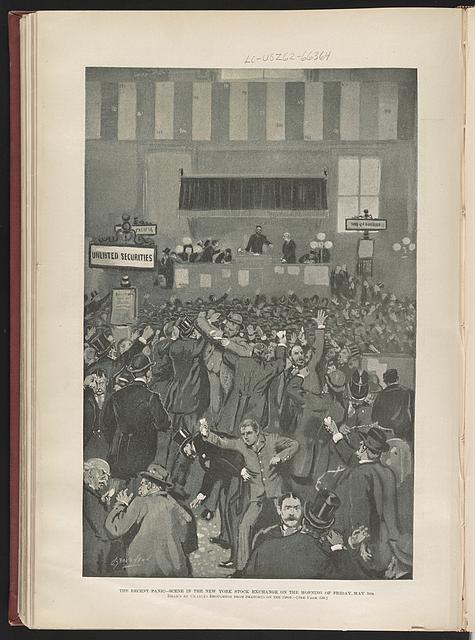
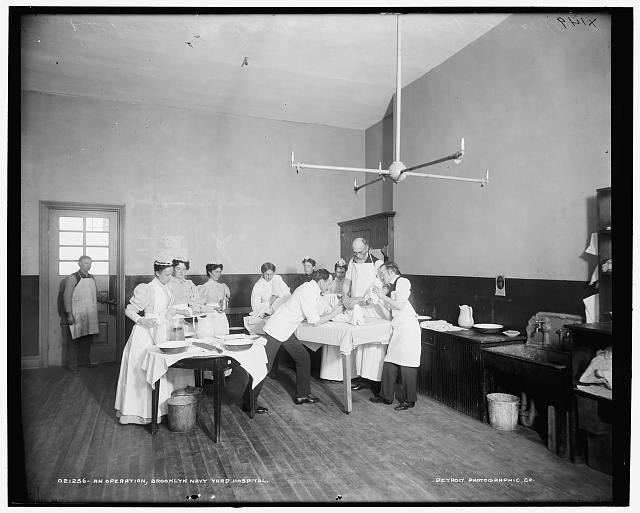
What we know for sure is that Mary Banta became ill sometime during the 1890s. Her illness kept progressively getting worse, and she had two unsuccessful surgeries.[19] There is no record of what her sickness was, only that she had been suffering for a long time, according to her obituary.[20] During one of the surgeries, performed in Chicago, Mary contracted blood poisoning, which would lead to her death on July 3, 1900.[21] She was only forty years old and was surrounded by her mother, Frank, and Roy as she passed on.[22] The Oral History surrounding the Bantas’ move typically indicates that the move was conducted for Mary’s health. She could no longer take care of a large house, downgrading twice because of her health. The surgeries could have also contributed to the change in living circumstances. In addition to her surgeries in Chicago, there would have been travel expenses, medical bills, and lodging. Not to mention, there were probably numerous appointments and doctor’s visits before the surgeries or any other procedures were done. It is likely the Bantas’ move was prompted by both money and Mary’s health issues. However, we will probably never be absolutely certain as to what caused the Bantas to leave the house at 623 W Market.
Mary Banta’s personal history is not as straightforward as Frank Banta’s, or even her son Roy’s histories. That is the plight of being a woman before more equality was reached in society and probably still often an issue for women today. What we do know is that she was the classic, well-liked high society wife of the time. Mary’s obituary read, “She possessed a noble character and an affectionate disposition that endeared her to all who knew her.”[23] This is how she was thought of by the people of Lima. We see references to that from the other newspaper articles and even the fact that around a hundred people came to one of her house parties. Unfortunately, her life was not long lived, and she is buried today in the Woodlawn Cemetery in Lima.[24] All this said, she was the first female homeowner of the 632 W Market Street home. We will never know how much of the design decisions she in fact made, but we have this beautiful house today in part because of her.
[1] Article from Unknown Newspaper dated July 1900, in MacDonell House Research Collection.
[2] “All U.S., Fine a Grave Index, 1600s-Current Results for Roy Banta,” Ancestory.com, <https://www.ancestry.com/search/collections/60525/?name=Roy_Banta&event=_CA&pcat=bmd_death&qh=3f227a68c7e958ef98a6bd31f8e8e513>, accessed February 16, 2024/
[3] ‘The MacDonell House,” The Allen County Historical Society, Lima, Ohio, 1994, M-2
[4] Ibid.
[5] Patricia Smith, “Within These Walls: An Investigation into the Early Years of the Mansion Next Door,” Allen County Reporter, Special Issue, Vol. LXVII, 2013, 10.
[6] Allen County Reporter, XXXVII, 1981. No. 3, The Allen County Historical Society Lima, Ohio, M-16.
[7] “The Electric Light System,” National Park Service, <https://www.nps.gov/edis/learn/kidsyouth/the-electric-light-system-phonograph-motion-pictures.htm#:~:text=In%201882%20Edison%20helped%20form,the%20U.S.%20have%20electric%20power>, accessed February 22, 2024.
[8] Ibid.
[9] “Round About,” The Lima Times Democrat, May 13, 1893.
[10] Ibid.
[11] “Entertain in Their Elegant New Home,” Allen County Republican Gazette, October 23, 1894.
[12] Jeanne Porreca, “Autumn Chocolates: Banta Name is A Sweet Reminder of Lima’s History,” Generation Magazine, November 2010.
[13] Ibid.
[14] Patricia Smith, “John and Edna,” The Allen County Reporter, Vol. LX, 2005, No. 1, The Allen County Historical Society, Lima, Ohio 9.
[15] David O. Whitten, “The Depression of 1893,”Economic History Association, <https://eh.net/encyclopedia/the-depression-of-1893/>, accessed February 22, 2024.
[16] Patricia Smith, “Within These Walls,” 11.
[17] Charles C. Miller and Dr. Samuel A. Baxter, eds., History of Allen County, Ohio and Representative Citizens, (Chicago: Richmond & Arnold, 1906), <https://archive.org/stream/oh-allen-1906-miller/oh-allen-1906-miller_djvu.txt>, accessed January 11, 2024, 642
[18] “$150,000 in 1906 is Worth $5,140,283.33 Today,” In2013Dollars.com, <https://www.in2013dollars.com/us/inflation/1906?amount=150000>, accessed February 23, 2024.
[19] Jeanne Porreca, “Autumn Chocolates: Banta Name is A Sweet Reminder of Lima’s History,”
[20] Article from Unknown Newspaper dated July 1900, in MacDonell House Research Collection.
[21] MacDonell House Docent Handbook.
[22] Article from Unknown Newspaper dated July 1900, in MacDonell House Research Collection.
[23] Ibid.
[24] MacDonell House Docent Handbook.
Image Credit:
Broughton, Charles. 1893. The recent panic – scene in the New York Stock Exchange on the morning of Friday, May 5th / Drawn by Charles Broughton from sketches on the spot. February 22, 2024. https://www.loc.gov/pictures/item/2003688493/
Detroit Publishing Co. Between 1890-1910. An Operation, Brooklyn Navy Yard Hospital. February 22, 2024. https://www.loc.gov/pictures/item/2016804404/
Gibson, Charles Dana. [1899?]. The education of Mr. Pipp. XXXIV, on the occasion of Mr. Pipp’s birthday, a ball is given at Caroney Castle. February 22, 2024. https://www.loc.gov/pictures/item/2010716156/
Johnston, Frances Benjamin. Between 1890-1910. [Group portrait of friends at social gathering, seated and standing with tea cups, in domestic setting]. February 22, 2024. https://www.loc.gov/pictures/item/2001695468/
All other images from the Allen County Museum Archives.

